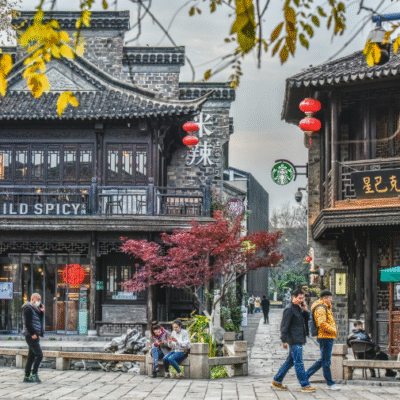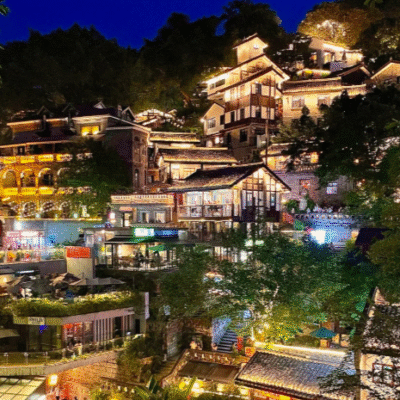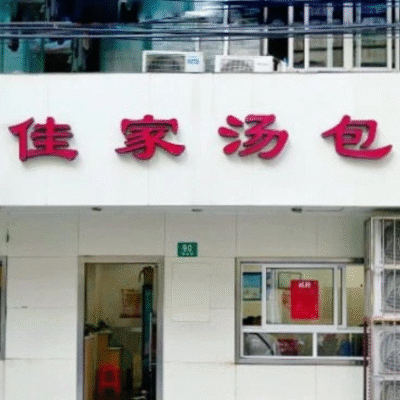Guangzhou, the capital city of Guangdong Province, ranks among the top Chinese cities most visited by international travelers according to official statistics. Before setting off, it’s worth considering how to make the most of your limited time to explore Guangzhou’s must-see attractions, before continuing your journey to Shenzhen.
Over the past three years, I have flown to Guangzhou nineteen times, and each arrival has felt like coming home.This carefully curated guide is designed to help you efficiently experience the highlights of Guangzhou within one to two days, ensuring a satisfying conclusion to your visit.
Top Attractions to Visit in Guangzhou
The table below features a selection of recommendations we have carefully curated. If you are short on time and can only spend two day in Guangzhou, these are the places you should prioritize visiting. Our choices are based on research into the most popular check-in locations and have been personally verified by Ms. Dove, a member of our team.
| Category | Name | Address | Recommended Reason |
|---|---|---|---|
| Historical Site | Chen Clan Ancestral Hall | No. 34, Enlongli, Zhongshan 7th Rd, Yuexiu District | A masterpiece of Lingnan architecture, with Chinese and English descriptions; ideal for learning about traditional craftsmanship. |
| Historic District | Shamian Island | Shamian Street, Liwan District | Quiet area with preserved European-style buildings; perfect for walking and photography. |
| Museum | Guangdong Museum | No. 2, Zhujiang East Road, Tianhe District | Free admission, modern architecture, bilingual exhibitions. |
| Shopping / Art | K11 Art Mall | No. 222, Xingmin Road, Tianhe District | Combines art and retail; features exhibitions and café culture in a stylish setting. |
| City Landmark | Canton Tower | No. 222, Yuejiang West Road, Haizhu District | Iconic city landmark with stunning night views; the observation deck is popular among international tourists. |
| Cantonese Cuisine | Bing Sheng Private Kitchen (Binjiang East Branch) | No. 500, Binjiang East Road, Haizhu District | Authentic Cantonese dishes in a modern setting; great introduction to local cuisine. |
Next, let’s take a closer look at each of the recommended places listed in the table, so you can better understand the unique features and appeal of every destination.
Chen Clan Ancestral Hall
If you can visit only one historic building in Guangzhou, it must be the Chen Clan Ancestral Hall.
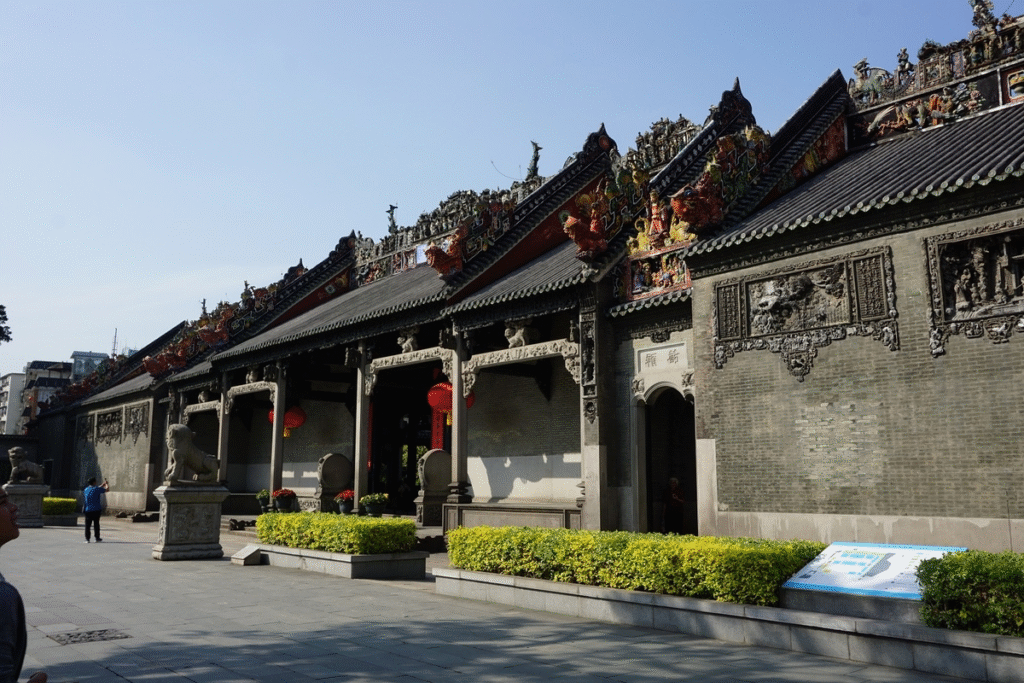
The Chen Clan Ancestral Hall is one of Guangzhou’s most iconic traditional buildings. Also known as the “Chen Clan Academy,” it was built during the Guangxu period of the Qing Dynasty and is the largest and best-preserved ancestral hall in the Lingnan region.

Renowned for its exquisite brick carvings, wood carvings, plaster reliefs, and colorful paintings, the Chen Clan Ancestral Hall is hailed as a treasure of Lingnan architectural art and serves as an excellent starting point to understand the craftsmanship and cultural history of the region.
Recommended visit time: Arrive by 10:00 AM
Transportation: Take Metro Line 1 to Chen Clan Academy Station, Exit D, then walk to the site
Admission fee: ¥10
Tips: Morning light is best for photography, with the southeast corner offering particularly great views; the site also features a cultural and creative shop worth visiting.
After touring the Chen Clan Ancestral Hall, it’s about a 15-minute walk to the next destination—Yongqingfang.
Yongqingfang
Yongqingfang is located on Enning Road in Guangzhou’s Liwan District and stands as a representative historic and cultural neighborhood of the city’s Xiguan area.
Once one of the best-preserved clusters of “Qilou” arcade buildings in Guangzhou, it has undergone a carefully planned “micro-renovation” project that seamlessly blends traditional Lingnan culture with modern urban life. Today, Yongqingfang is a popular tourist destination that combines history, culture, art, and cuisine all in one vibrant space.

Here, you can follow the itinerary we have carefully prepared to explore the area.
| No. | Name | Description | Features & Highlights |
|---|---|---|---|
| 1 | Cantonese Opera Museum | Showcases Cantonese opera history, traditional costumes, and props | Learn about Cantonese opera; occasional live performances |
| 2 | Bruce Lee Ancestral Home | Former residence of kung fu legend Bruce Lee | Discover Bruce Lee’s life and martial arts achievements |
| 3 | Movable Type Printing Experience | Traditional movable type printing craft experience | Hands-on printing activity |
| 4 | Zhongshuge Bookstore | A cultural space combining bookstore and art gallery | Ideal for reading and photography |
| 5 | Glow-in-the-dark Graffiti Wall | Painted by multiple artists with elements of Cantonese culture | Especially striking under night lighting |
| 6 | Specialty Food Shops | Concentration of traditional Cantonese snacks and creative local products | Taste authentic food and buy souvenirs |
Bruce Lee’s name is familiar to many, and Yongqingfang is home to the ancestral residence of this martial arts legend, where you can personally experience his life story and legacy. After your visit, you can conveniently continue to explore nearby attractions with ease.

After visiting Bruce Lee’s ancestral home, it’s just a 3 to 5-minute walk to the Cantonese Opera Museum, allowing you to easily explore two fascinating attractions.

Shamian Island
Shamian Island is one of Guangzhou’s most charming neighborhoods for leisurely walks and photography. Formerly a colonial concession, it still preserves a large collection of European-style buildings.

Arches, wrought iron railings, stone brick walls, and lush southern greenery intertwine to create a picturesque setting that feels like stepping into a living postcard. The area blends historical ambiance with contemporary urban life, making it an ideal spot to slow down, take photos, or sketch.
It’s worth noting that Shamian Island is about a 15-minute walk from Yongqingfang, approximately 1.5 kilometers away. You can stroll along Shamian North Street or Shamian Street, enjoying the well-preserved European architecture and scenic surroundings along the way.
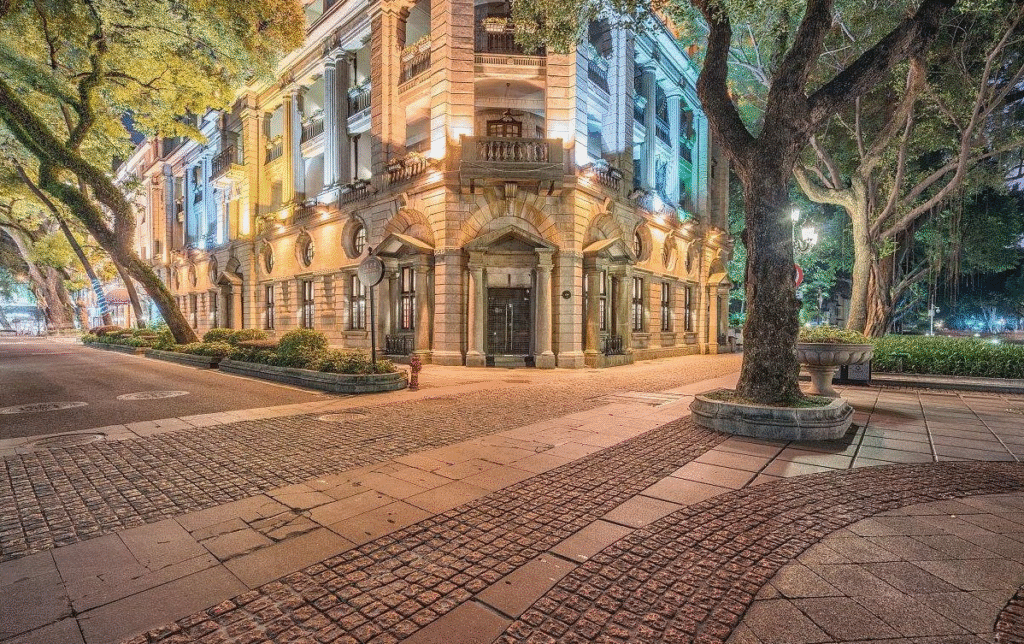
The entire walking route is flat and very suitable for a leisurely stroll, allowing you to fully appreciate the unique charm of this historic district.
Tips: Wear comfortable shoes and bring sun protection. For photography on holidays, it’s best to arrive early to avoid crowds.
To end your day, we recommend dining at Bing Sheng Private Kitchen (Binjiang East Branch), located nearby. Enjoy an authentic Cantonese dinner while soaking in the beautiful night views of the Pearl River.
The night scenery here is especially stunning.
Bing Sheng Private Kitchen
Bingsheng Private Kitchen (Binjiang East Branch) is a highly acclaimed Cantonese restaurant located in Guangzhou’s Tianhe District. Awarded one Michelin star, it exemplifies the essence of modern Cantonese cuisine in Guangzhou.
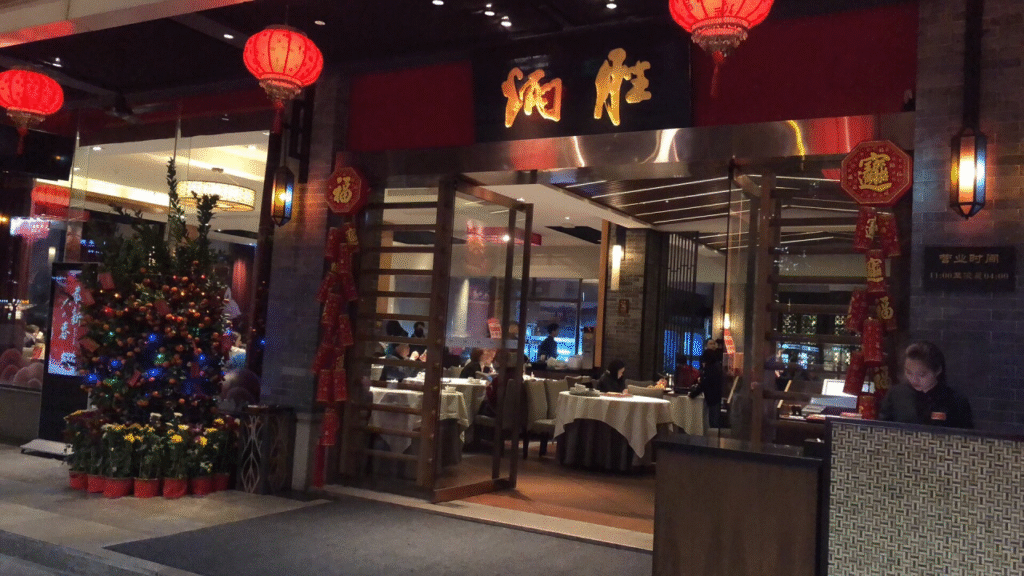
Bingsheng Private Kitchen (Binjiang East Branch) is renowned for its use of seasonal organic ingredients and emphasis on healthy cooking methods, delivering refined Cantonese cuisine that seamlessly blends tradition with innovation.
Signature dishes such as Dongmen mud crab steamed with loofah, lemongrass roasted pigeon, and crispy pineapple buns showcase the unique flavors of Guangzhou’s culinary heritage.

The elegant dining environment, infused with rich Lingnan cultural elements, offers guests an unforgettable gastronomic and cultural experience.
Things to Prepare Before Visiting the Guangdong Museum
Beyond its historic streets and traditional architecture, Guangzhou also reveals a vibrant modern side. If you only have two days in the city, dedicating one full day to exploring its contemporary urban landscape is well worth your time.
Enjoy a Cup of Milk Tea Before Heading to the Guangdong Museum
Guangzhou, as a major transportation and commercial hub within the Guangdong-Hong Kong-Macao Greater Bay Area, is deeply influenced by Hong Kong culture. Tea restaurants can be found throughout the city’s streets, forming an integral part of local urban life.

Hot milk tea, macaroni soup, and pineapple buns are a typical breakfast combination for many office workers—affordable, consistent in quality, and the perfect way to experience authentic local life when you first arrive in Guangzhou.
We recommend Tsui Wah Restaurant (IGC Tianhui Plaza Branch), which is conveniently located and easily reached by taking Metro Line 5 to Liede Station, Exit B, directly into IGC Tianhui Plaza. The ideal dining time is between 9:00 and 10:30 a.m., with an average cost of about 50–80 RMB per person. On holidays, it’s best to arrive early to avoid waiting in line.
Guangdong Museum
After breakfast, you can walk along the city’s central axis to the Guangdong Museum. This new building, completed in 2010, was inspired by star charts and the traditional Lingnan treasure box. Its distinctive “floating box” exterior combines a modern architectural style with strong regional symbolism, making it one of Guangzhou’s most iconic cultural landmarks.

Route Recommendation
One of the main reasons we suggest Tsui Wah Restaurant is that it is only about a 10-minute walk from the restaurant to the Guangdong Museum. The route is pleasant and lined with greenery.
Tip
If you have additional time, consider stopping by the Guangzhou Library. Its contemporary architectural design, multiple art exhibition spaces, and observation decks make it an excellent place to relax or do some work.
Canton Tower
After finishing your visit to the Guangdong Museum, you can wait for nightfall and then walk from the museum along the riverside promenade to Canton Tower. The distance is approximately 2 kilometers, and the walk takes about 25 to 30 minutes.

The route offers beautiful scenery along the way, making it perfect for photography and relaxation. It is an excellent way to experience the unique charm of Guangzhou’s urban landscape.
Our Perspective
This itinerary and its featured attractions have been carefully selected by me and my team. The entire route is designed to be completed on foot—no need to take the metro. Each destination was estimated based on optimal walking distance from the previous stop, using map data and real-world navigation.
As you follow this guide, you’ll discover that the walking paths are lined with beautiful scenery, offering a relaxed and immersive way to explore the city. We hope this thoughtfully crafted guide proves helpful and enhances your experience in Guangzhou.

